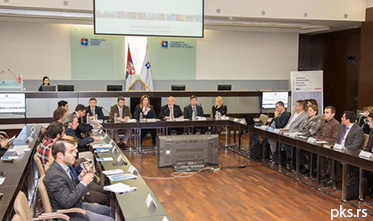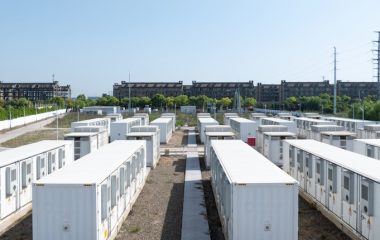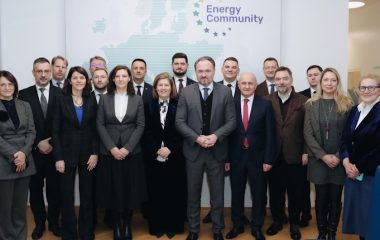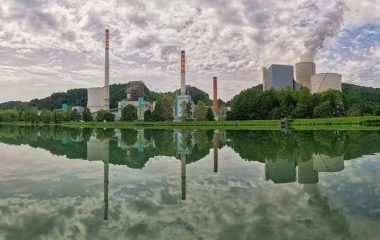
Photo: WindEurope
“The biggest thing we get from a cumulative impact assessment is for developers to share data, and this is a major win for the environmental community, because usually most are shy to do so,” Lori Anna Conzo, International Finance Corporation’s environmental specialist, told Balkan Green Energy News at an event on wind power.
She participated in a regional workshop entitled “Windfarms and the environment: impact on birds and bats”, organized in Belgrade by International Finance Corporation in cooperation with the Institute for Nature Conservation of Serbia and Serbian Chamber of Commerce. One of the topics was the effect on biodiversity that several planned wind power plants parks in the south of Banat region in Serbia may have combined, concerning they are to be located near the special nature reserve of Deliblato Sands (Deliblatska peščara).
The cumulative impact assessment is a prediction on a large scale, defining the areas of the highest risk for birds, in addition to the environmental and social impact assessment, she added. “We try to work with developers as a whole rather than one at a time. My first goal is to work with them and gain their trust to share data. Then we look at the cumulative impact and target measures,” Conzo said.
Lori Anna Conzo: Most developers jump to the mitigation topic, but with the right assessment one can avoid high risk, because adding mitigation measures is expensive.
IFC’s Environment, Social and Governance Department looks at a wind farm and recommends mitigation measures that are effective for the particular site, making sure that the developer invests in something that will really work, she explained.
“However, beyond mitigation, the most important thing that we advocate is the avoidance of impact. Most developers jump to the mitigation topic, but with the right assessment one can avoid high risk, because adding mitigation measures is expensive,” the expert said. For bats, acoustic deterrence is an option, but an expensive one, because a device needs to be installed on every turbine.
“More effectively, we should understand the activity of bats in the area and limit turbine use at times in order to avoid impact entirely”, Conzo explained. In her words, mitigation can also be achieved by changing the turbine’s cut-in or starting speed to a safer level whenever bats are active.
The event was organized with the aim to reconcile interests and expectations from different levels: local legislation, financial institutions and the project developers, said Nebojša Arsenijević, IFC’s renewable energy program manager for Europe, Middle East and Africa.
“The simplest and cheapest way is to define all the demands at the very beginning, so that later we don’t have to do the same things several times over,” he added. IFC has a unique opportunity to promote the best international standards and stimulate cooperation between all relevant factors in the country and the region in order to incite a faster and, from an environmental aspect, more acceptable implementation of renewable energy projects, Arsenijević said.
He also stressed it is important to prepare the non-governmental sector for a constructive role in the process concerning the construction of wind parks, to avoid having any organizations act with malice and obstruct it.
IFC’s wind power portfolio in the emerging markets exceeds 2.6 GW, said Milica Sredanović, finance officer from the institution’s Infrastructure and Natural Resources Department. The International Finance Corporation, World Bank Group’s development investment arm, participates in one third of capacity in wind projects in Croatia (Šibenik, Rudine, Jelinak), she added.
It is also active in wind park development in Serbia and may extend operations to Bosnia and Herzegovina and other markets in the region, Sredanović stated at the workshop.








